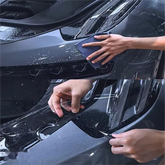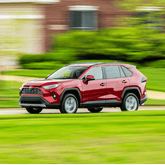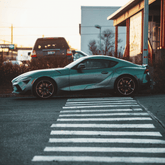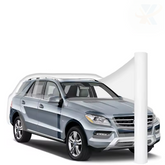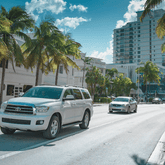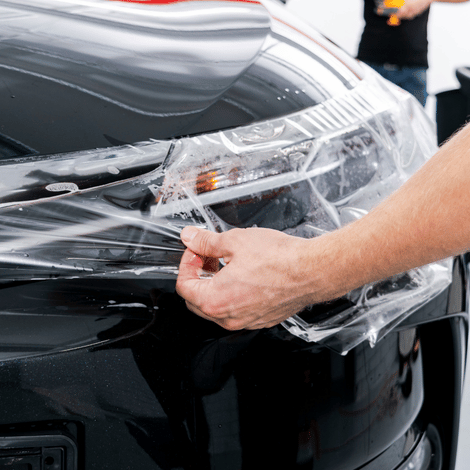Comprehensive Guide to Installing PPF on a Front Bumper for Maximum Protection
In the period of superior automotive care, Paint Protection Film (PPF) is now more than ever a necessary fix for owners who want to keep their cars' good looks and value. This complete guide will walk you through a PPF installation process on a front bumper, which is highly prone to damage from road debris, environmental hazards, and minor accidents. The intention here is that at the end of this article, readers will be able to acquire the technical skills needed to do it right and learn best practices that guarantee maximum protection and durability. From selecting appropriate materials down to surface preparation before film application, this manual has everything covered, making it suitable for beginners or experienced DIYers alike.
What is PPF and How Does it Protect Your Front Bumper?

Understanding PPF: Paint Protection Film Basics
Paint Protection Film (PPF) is a type of thin and durable urethane-based material that acts as a defense mechanism against scratches, abrasions, and other damages that may occur on the exterior surface of a vehicle. It does this by creating a shield between the paint of the car and such things as dirt, road debris, or even harmful UV rays from the sun. PPF has been designed to be see-through so that it may not interfere with the general appearance of the automobile while still offering the maximum protection possible. Besides, some types of PPF usually come with self-healing properties such that they can disappear small marks when heated up. This self-adhesive film follows every curve found on a front bumper, thus giving seamless protection, which ensures that automotive finishes are preserved throughout their life span, thereby maintaining higher resale value for any car over time.
Benefits of PPF on a Front Bumper
Covering a car’s front bumper with Paint Protection Film (PPF) has many benefits that help keep the vehicle's appearance for longer. For one, PPF is especially good at preventing scratches and chips caused by things like stones on the road, which can damage paintwork. Secondly, it is a barrier against environmental factors such as UV rays that cause fading and wear over time. Another thing is that lots of PPFs have self-healing properties, meaning they can fix themselves when heated to get rid of small abrasions or swirls, so they always look perfect. Moreover, this will also maintain originality, thus increasing resale value, which is cheap for those who own cars since an investment made occasionally is economical. The most important benefit, though, still remains that not only does installing PPF on your front bumper make it look better, but it also serves as a significant safeguard towards ensuring your vehicle lasts long.
How PPF Prevents Scratches and Rock Chips
Using a protective film for painting (PPF) is good for stopping scratches and rock chips by having a strong and flexible material designed to absorb and disperse impact energy. When this vehicle comes into contact with road debris or stones, such thickness and elasticity create a shield that prevents direct touch between car paint surfaces. Moreover, the self-healing features of this film enable it to recover from minor scratches; heating them causes polymer chains within it to reorganize, hence “healing” the top layer and leaving behind a smooth finish. Not only does this safeguard protect against physical damages, but it also ensures aesthetic preservation where paints remain untouched by anything for long periods. To put it briefly, PPF acts as an essential shield against natural wear & tear during normal driving conditions, thus improving the lifetime value and beauty of any vehicle.
Why Should You Consider PPF for Your Tesla Model's Front Bumper?

Advantages of Installing PPF on a Tesla Model 3
Deploying Paint Protection Film (PPF) on a Tesla Model 3 has many benefits designed to improve the automobile's durability and appearance. PPF, first and foremost, safeguards the paint from being destroyed over time by environmental elements such as UV rays, acid rain, bird droppings, etcetera. This is especially important for electric vehicles like Model 3, which are mostly exposed to agents that can alter the quality of paint.
Secondly, this film is made in such a way that it fits perfectly well onto various parts such as the front bumper, among others, thereby giving it total coverage, hence protecting against scratches caused by everyday driving situations like parking lot accidents; what’s more some self-healing films usually sold at auto detailers’ shops across globe even can remove light scratches or swirl marks when heat is applied to maintain the blemish-free look.
Finally, Installing PPF may increase the resale value of a Tesla Model 3 by keeping its factory finish intact. Clean, used electric cars are increasingly becoming popular nowadays; thus, if one wants his car purchased quickly and at a higher price, he should ensure that the outside parts remain new by having them covered with paint-protective materials like those mentioned before. In summary, not only does PP safeguard beauty aspects inherent in Tesla models, but it also ensures continuous investment into maintenance needs for long-term use.
Customer Reviews and Satisfaction
On several platforms, customers have expressed great satisfaction with the Paint Protection Film (PPF) for the Tesla Model 3. They mostly point out that it is crystal clear, which means that the vehicle's appearance will not be affected in any way. According to reviews on top automotive websites, it can hide blemishes better than anything else and make finishes look much more glossy.
Also, feedback often mentions how easy it is to maintain since the self-repairing qualities inherent in most PPFs greatly reduce the frequent need for touch-ups. As far as installation goes, many people find this part simple, whether done by themselves or professionally, resulting in a seamless, high-quality finish.
Last but not least, the customer frequently justifies spending money on ppf because some of them noticed their cars reselling at a higher price than those without one installed, reaffirming its ability to keep the original paint intact. Altogether, what Tesla Model 3 owners agree upon is that PPFs are a good thing for the longer life span of vehicles and the joy derived from owning them.
Enhancing the Aesthetic Appeal of Your Car
Many ideas can be used to make your car look better, some of which are derived from top vehicle websites. The first strategy is to wash the car on a regular basis and apply wax to it to maintain its shine and guard its paint against contaminants in the environment. Another protection layer can be added by utilizing advanced ceramics, which also make surfaces easier to clean since they increase glossiness.
The other method involves modifying various parts with non-factory accessories like body kits, upgraded light systems, or even customizing wheels, which can significantly transform how the automobile looks, thus enabling one to show off his/her personality through their car’s unique styles, according to findings published after market researches were carried out among many other things such simple activities as putting tinted windows or attaching chrome decorations may also enhance sleekness.
Last but not least, try keeping the interior clean by using good cleansers and protectants, which will help preserve the materials used in them, ensuring that aesthetic appeal is maintained both inside and outward. In conclusion, all these tips not only make your motor look good but also increase its resale value, according to different auto experts who conducted their surveys based on various models available on the market today.
How to DIY: Installing PPF on a Front Bumper

Essential Tools and Kits for PPF Installation
You must have the right tools and kits to achieve a professional finish when installing paint protection film on a front bumper. Here are some essential items recommended by top automotive sources:
- PPF Installation Kit: Many complete kits include pre-cut PPF sheets for your vehicle model. Commonly used brands often provide materials that are easy to shape and apply.
- Squeegee and Application Tools: A soft squeegee is required to apply the film without trapping air bubbles underneath it. Some kits may also include special application tools designed to help the movie fit better around bumper corners.
- Heat Gun or Hairdryer: Controlled heat should soften the film, allowing it to conform more closely around curves and edges. The use of heat can also assist in getting rid of any remaining air bubbles during installation process.
- Spray Bottle with soapy water: A mixture of water and a few drops of dish soap provides lubrication during application, making the film easier to reposition before it sticks permanently to surfaces.
- Utility Knife or Razor Blade: A sharp utility knife allows you to trim off extra films after sticking them on, thus ensuring clean lines while protecting the paintwork from being scraped off.
- Microfiber Cloth: This cloth is used to clean the surface before application and wipe away excess water/solution once the film has been applied.
- Surface Cleaner: An automotive-specific surface cleaner ensures the removal of all contaminants before installation, enhancing the adhesion capability that PPF offers.
With these tools at your disposal, you will only need to follow instructions for an easier time during installation, which enhances the efficacy levels exhibited by Paint Protection Film towards safeguarding front bumpers against damage threats over extended periods.
Step-by-Step Tutorial for Applying the PPF
- Surface Preparation: Start by rigorously cleansing the bumper with a surface cleaner to eliminate dirt, dust, or debris. This step is crucial as it ensures that the Paint Protection Film (PPF) sticks well. Furthermore, dry the surface using a microfiber cloth so that moisture does not affect installations.
- Soapy Water Solution Application: Fill up a spray bottle with water mixed with some drops of dish soap. Mist lightly on the area where you will apply PPF.This lubricates and enables easy movement of film during installation.
- Film Placement: Remove the backing from the PPF and carefully put it over the bumper. Make sure you align it correctly, using vehicle edges and contours as reference points. Since this solution is slippery, you can reposition it if necessary.
- Squeegeeing the Film: Begin at the center and work towards the outer parts using a soft squeegee to get rid of air bubbles and excess water. Apply balanced pressure so that the film is not damaged.
- Heating: Use a heat gun or hairdryer on low to warm the film gently and make it soft enough to fit nicely around corners and conform to curved surfaces. Take care not to overheat, as this can damage paintwork and films.
- Cutting edges: Once you have ensured that the film is applied correctly and there are no bubbles left, use a utility knife to trim off any excess material from the sides of bumpers – this will give them a clean, professional finish.
- Final check-up and cleaning: After cutting, check for any bubbles or faults left under; wipe it with a microfiber cloth for neatness. Wait until curing (according to manufacturer’s instructions) for maximum efficiency achieved.
By following these steps, you can successfully install Paint Protection Films, which will greatly protect the front part of your car from damage.
Tips for Smooth Squeegeeing and Curve Handling
- Use a Glide Solution: Consider using a glide solution to make the squeegee move smoothly on the film; it helps reduce friction, allowing easy maneuvering around curves and contours.
- Apply Even Pressure: When working with a squeegee, apply even pressure to avoid damaging the paint protection film (PPF). You should push from the center towards its edges slightly, allowing more water and air to escape.
- Work in Sections: Instead of trying to squeeze all at once, you can do small sections, especially if many complex curves are involved. This allows for better control and effective management of such areas.
- Pre-stretch the Film: When dealing with tighter curves, it is advisable to pre-stretch films to conform appropriately. Soften them with heat first from a heat gun, but be cautious not to overheat.
- Utilize the Right Tools: Different types of squeegees can be used depending on where one needs to apply more or less pressure, e.g., a felt-edged hard card squeegee for delicate areas. A trim tool might also come in handy while doing some edge work.
Following these hints will greatly improve your skillfulness in applying Paint Protection Film around corners during squeegeeing, making it look professional and efficient.
Professional PPF Installation: Is It Worth It?

Advantages of Professional vs. DIY Installation
When considering paint protection film (PPF) applications, a person should decide whether to have professionals install them or make them themselves. Experts know many things, including special skills, and this ensures flawless application by reducing the chances of errors during installations that may affect the effectiveness and appearance of the films. Advanced resources and materials are common for professional installers, making their installations more durable and accurate. Additionally, most professionals provide guarantees that cover how long the film will last and its performance, thereby giving peace of mind about these aspects.
On the other hand, although doing it yourself may save money, this method requires considerable amounts of time and energy for one to achieve satisfactory outcomes. It can be difficult, especially when dealing with compound curves or intricate body lines. Any mistake made might result in noticeable blemishes or even ruin the finish on car surfaces. Ultimately, people need to balance what they want to be done vis-a-vis their financial capabilities, but if someone wants something better done, then going for professional installation would be best.
Choosing a Reputable PPF Installer
Select a reliable installer to guarantee a great outcome with your paint protection film (PPF). You should consider several factors when choosing the right company for this job. First, check their qualifications and experience in this field. Typically, an established firm will have examples of previous jobs done correctly so that you can know whether they are good at applying PPFs. Moreover, review customers’ reviews and testimonials to find out what others say about them.
Secondly, make sure only premium materials and tools get used by these professionals since it directly determines how strong or useful the PPF becomes. Once installed, it should last longer than if any other thing was used during the installation process. Ask them which film brands they prefer most and whether a workmanship warranty is given together with a lifespan warranty for the film itself. Such details must be clearly communicated by whoever does installations, so don’t hesitate to seek clarifications where necessary.
Finally, consider the customer service offered at different places before settling on one over another. The best installers communicate well; they will guide everything stepwise until everything goes as expected from beginning to end. With these tips, you can find perfect personnel who will offer excellent services throughout the project.
Encore Window Tinting and Paint Protection Expertise
Encore Window Tinting and Paint Protection is known for its commitment to quality service and customer satisfaction. We do this by utilizing advanced techniques and high-performance materials so that each installation meets the highest standards of excellence. Our team comprises certified professionals with extensive experience in window tinting and paint protection film (PPF) applications.
The top industry websites, such as XPEL, 3M, Solar Gard, etc., all agree that the key to a superior PPF installation is properly training the installer and using good-quality material. For example, XPEL believes precise cut technology should be used because it reduces risks during the application, while 3M claims its films can resist yellowing or fading over time, among other benefits. In addition to this, Solar Gard also advocates for better warranty programs that give clients peace of mind regarding their investments.
We follow these industry best practices at Encore, providing comprehensive services backed up by premium products and a strong warranty structure. Our thorough installation process ensures that your car not only looks good but also remains safe from environmental hazards, thus making it a sound long-term investment decision on your part.
Maintenance Tips for Your Front Bumper's PPF

Cleaning and Caring for Your PPF
Regular washing and maintenance are essential for keeping paint protection film (PPF) in good condition. First, rinse the area with clean water to remove any loose dirt. It is better to use pH-neutral automotive soap along with a soft microfiber cloth or sponge rather than using strong chemicals or abrasive materials, which could harm the film. After washing, rinse well and dry the surface using a separate clean microfiber towel to avoid leaving water spots. Automatic car washes should also be avoided as brushes might scratch or lift the edges of PPF. Finally, high-quality wax or sealant made explicitly for PPF can be applied to enhance its shine while protecting against environmental pollutants. Regular maintenance will keep your investment looking good for many years to come!
Self-Healing Properties Explained
The toughness and durability of paint protection film (PPF) are boosted by the self-repairing properties it possesses. It is a thermoplastic polyurethane that can fix light scratches and scuffs through heat activation. The material turns flexible when subjected to heat from sunlight or warm water, thus allowing molecules to reorient themselves and thereby healing the surface. In other words, with time, defects may vanish, consequently improving clarity and the protection offered without replacement needs being met. Moreover, this function saves car owners from having to worry about maintenance while also safeguarding against environmental hazards such as UV rays, which could destroy both appearance and defense mechanisms for a longer period of use. For example, continuous exposure to the sun will maximize these self-fix abilities, making it wise for someone who wants their vehicle taken care of over many years.
Extending the Life of Your Paint Protection Film
Industry experts recommend some best practices for extending the life of your paint protection film (PPF). One is to ensure regular cleaning, which should be done by hand using pH-balanced soap made for cars so as not to ruin the film. Another is applying a ceramic coating over it, which prevents chemical stains and makes maintenance more accessible by improving hydrophobic properties. Parking in shaded areas or using car covers where possible can reduce UV exposure effects on PPF, thus keeping its integrity intact while dealing with minor damages promptly and avoiding high-pressure washers, significantly contributing to its longevity. Following these steps during routine vehicle, care will keep working well for many years and still look as good as new.
Reference Sources
VehicleFrequently Asked Questions (FAQs)
Q: What is PPF, and why should I put it in front of my car?
A: Paint Protection Film (PPF), a clear bra, is a material you can add to your bumper to protect against stains and paint chips caused by road debris. Installing PPFs on front bumpers is an excellent idea because they help keep cars looking new while shielding them from damage.
Q: Can we use this product with Tesla models?
A: Absolutely! This stuff works perfectly fine alongside any type of Telsa model vehicle; many owners even tint their windows or use other types of paint protection film over them so that everything remains showroom quality for years.
Q: How does self-healing PPF work on the front bumper?
A: The adhesive layer on self-healing PPFs repairs itself when scratched or marked lightly (such as through sun heat contact). It doesn’t require any physical intervention - all scratches vanish automatically in due time, maintaining an excellent condition for your bumper.
Q: Should I install PPF on my car or hire someone else?
A: While beginners can install PPFs if armed with the necessary tools and instructions, hiring professionals guarantees an incomparable finish – particularly around places like front bumpers, which have complex surfaces. Kindly reach out to us via Mail concerning professional installation services.
Q: What tools do I need to apply ppf onto my front bumper?
A: For optimal results, you should possess a squeegee, heat guns, and pre-cut kits. The adhesion layer must fit correctly without creating bubbles if maximum protection is desired.
Q: Can PPF be applied to only a partial front section of the car?
A: Yes, it can – either partway up the hood or the bumper itself. Depending on what you want to protect against, some people like covering the whole nose.
Q: How do I clean the bumper before applying the protection film?
A: Make sure that you clean everything off of it. Dirt, grease, dust, or anything else getting in between will mess with how well your adhesive sticks down!
Q: Are there any particular brands of PPF recommended for the front bumper?
A: Absolutely – 3M and Lotus are among the finest names in this industry. They have been shown time after time again to be not only durable but also great at protecting against chips from rocks, etcetera.
Q: What should I do if I’m fenced about PPF for my front bumper?
A: Well, here’s an idea: Think about all those savings that could come from never fixing paint again! If you would like a more detailed breakdown of these advantages and customer feedback, please reach out through Mail.
Q: How long will the PPF last on my front bumper?
A: It depends on what sort they gave you, but typically, high-end ones can stay anywhere from five to ten years if taken care of properly. Just make sure to give it a good wash every so often and always inspect damages when doing so, then touch up accordingly.
